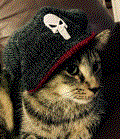Results 1 to 10 of 14
Thread: What type of infill do you use?
-
08-10-2014, 08:33 AM #1Student

- Join Date
- Feb 2014
- Posts
- 42
What type of infill do you use?
I'm curious. What is the typical infill amount you use when 3D printing objects? I usually print with 10-35% depending on how strong I need an object.
My main question is what infill pattern is usually the best? I use hexagons very much, but do lines and other infills work as well?
What are the benefits of each?
-
08-10-2014, 04:22 PM #2Engineer

- Join Date
- Jan 2014
- Posts
- 462
Honeycomb tends to give me the best top layer.
-
08-10-2014, 05:20 PM #3
I always use the hex pattern. The percentage is anywhere from 20-80% depending on the part.
-
08-11-2014, 03:11 AM #4Engineer-in-Training

- Join Date
- Jun 2014
- Posts
- 349
30 to 100% for small production parts.
Also I've heard that linear infill that is perpendicular to the length of the part will help reduce ABS warping.
-
08-11-2014, 08:33 AM #5Engineer-in-Training

- Join Date
- Mar 2014
- Posts
- 223
Linear infill almost exclusively, I think it's faster and causes less wear on the printer.
-
08-11-2014, 10:12 AM #6
I use Cura as my slicer now, so I don't get to choose. When I was using Slic3r, I tended to use rectilinear more and more as I went along. As CaptainObvious suggests, linear or rectilinear are "easiest" for the printer to do since they involve straight line movements. I grew to realize that on large, dense parts the majority of the print time is spent on infill. Most people orient parts square on the print bed and then rotate the infill (say to 45 degrees). I found that by rotating the part instead so the infill orientation could be set to 0 degrees, prints would go a lot quieter (only one motor moving during an infill line, and its only moving in one direction) and get done a lot quicker (maybe reduced by 25%?).
Last edited by printbus; 08-11-2014 at 10:15 AM.
-
08-13-2014, 10:03 PM #7
Straight lines do not matter on Deltabots.
-
08-14-2014, 03:39 AM #8
Busts, figurines 0% infill wherever possible!!!
Example..
My Shrek bust takes 3 hours at 13cm high with 0% infill and 2 shells. It looks identical to one thats printed with infill,( on the outside) It's a bust, its not a quadcopter arm.. its not going to need any infill as far as rigidity. If I print the same bust with just 5% infill, and the print time is then 5 hours, and so on. If the part is going to see wear and tear, I like using the octagonal fill at about 25%, it gives a good binding that goes in line with the travel movements, whereas Linear infill, or straight lines for me take longer, others have said its quicker, but not for me sadly - I also found that linear infill on super large objects caused layer splitting later on.
-
08-14-2014, 08:00 AM #9
check the advanced settings - cura gives you a variety of different infill patterns. And even tells you which are better, take longer to print etc.
I'm guessing you've never used anything other than the 'basic' settings.
I believe it's default is rectilinear.
I had the opportunity of playing with slicers for 9 months while waiting fora makibox and then after bying a flashforge - discovering with horror that rather tha using all the really cool programs I'd been playing with I was stuck with the piece of software with the fewest and least useful options on the planet.
Hopefully I'll be able to use slic3r in the thnear future - when I get time to sit down and work the whole flowchart of what and when and how out :-)
One of the reasons I'd like to use cura on my flashforge is the total control over infill - as well as a helluva lot of other improvements over makerware.
Not only do you have a choice of infill, but I believe it even lets you pick the initial and subsequent layer orientation.
Haven't looked at it for a month or so - as It just depresses me that I can't curently use it with my printer :-)
As far as infill - I'm with geoff - hollow looks as good and with 2-3 shells is still pretty strong.
For super strong parts I'll go all the way up to 15% !
With a honeycomb filling (makerware default) that's a super strong part.
I have yet to see any point in going beyond 15% infill.
And generally use 5-10 if i need a surface to bridge a gap. Even on a small part a 5% infill will let me bridge a pretty decent gap.Last edited by curious aardvark; 08-14-2014 at 08:05 AM.
-
08-14-2014, 09:08 AM #10
I'm in advanced settings all the time. Maybe my installation went wrong, but my first-time use of Cura was v14.07 and there's no option anywhere to set the infill type. Not on the Basic, advanced, or the expert settings.
EDIT: I also don't see selection of infill type mentioned in the on-line manual for Cura, current as of v13.11.2
EDIT #2: Today I found discussion in the user forum at Ultimaker that the ability to select infill type was removed from Cura at or around v13.04. That would explain the disconnect.Last edited by printbus; 08-14-2014 at 12:58 PM.




 Reply With Quote
Reply With Quote








Extruder not feeding during print,...
04-24-2024, 01:59 AM in Tips, Tricks and Tech Help